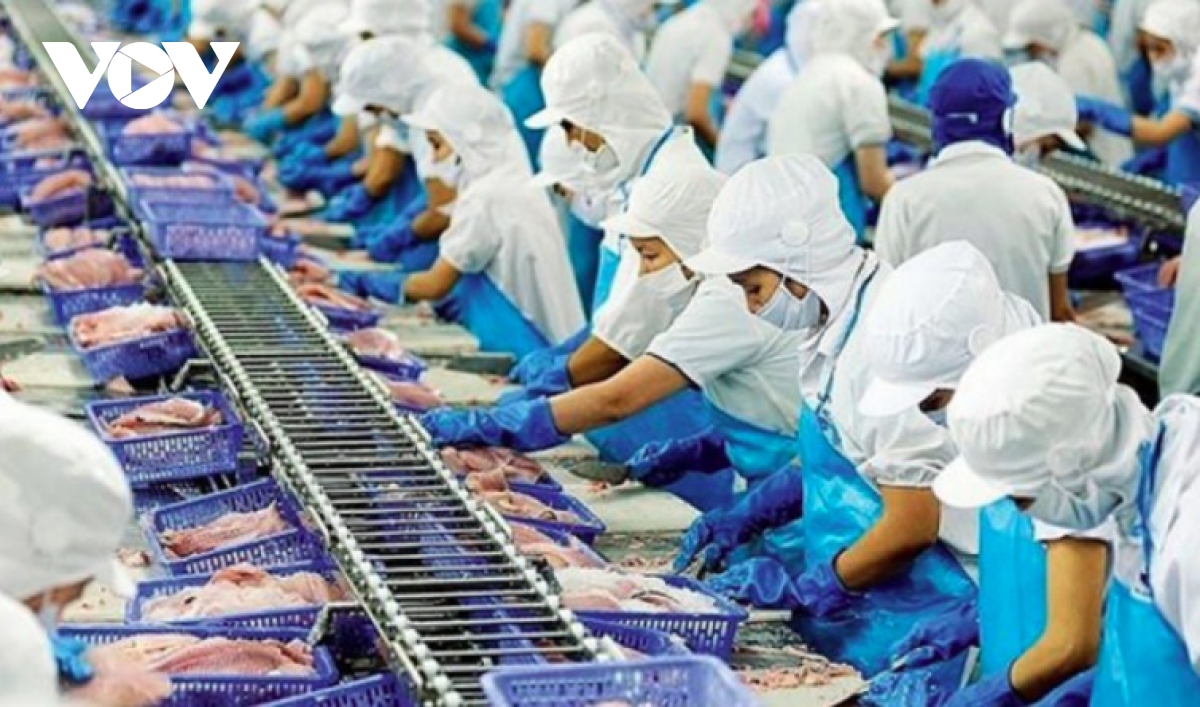Seafood sector adapts to new markets, targets US$11 billion in exports
VOV.VN - With flexible market strategies, deeper processing and focus on niche markets, Vietnam’s seafood industry aims to sustain growth and reach its 2025 export target of US$11 billion.
Vietnam’s seafood exports reached US$4.07 billion in the first five months of 2025, rising 14% from a year earlier. The top three markets -China, the US and Japan- made up 51% of the total, with shrimp and Tra fish (pangasius_ still driving the bulk of shipments.
Despite strong growth, the industry is facing mounting challenges, including stricter technical standards, quarantine regulations, sustainability requirements in key markets, climate change, water pollution, and disease outbreaks, particularly the light-emitting disease affecting shrimp. In addition, Vietnam must contend with fierce competition from other major exporters such as India, Ecuador and Indonesia. To stay competitive, the sector is focusing on improving product quality, boosting low-cost production, and diversifying export markets.
Many exporters have proactively shifted their strategies. Caseamex, a major pangasius exporter to some 30 markets, is expanding into the EU and Asian markets. Go Dang Company has diversified its processed products and secured new clients to maintain steady operations.
Deep processing and targeting niche markets are also gaining momentum. Aside from frozen fillets, pangasius exporters are developing value-added products like fish balls, sausages, seasoned fillets, braised fish, sushi rolls, and ready-to-eat items tailored to urban consumers in Japan, the Republic of Korea, Singapore and Malaysia. By-products such as crispy fish skin, fish oil, collagen, gelatin and animal feed are becoming new growth areas.
According to the Vietnam Association of Seafood Exporters and Producers (VASEP), the global market landscape is shifting, and the pangasius industry must evolve accordingly. Niche markets once overlooked now offer untapped potential if approached strategically with a clear understanding of local demand and adaptability.
Vietnam has signed 17 free trade agreements (FTAs), including next-generation deals such as the Comprehensive and Progressive Agreement for Trans-Pacific Partnership (CPTPP), the EU-Vietnam Free Trade Agreement (EVFTA), and the UK-Vietnam Free Trade Agreement (UKVFTA).
These provide major advantages in market access, technology adoption, and competitiveness. Certified pangasius farmed under organic, ASC, BAP, GlobalG.A.P or RAS standards can command prices 1.5 to 2 times higher than conventional products.
Promising niche markets identified by VASEP include Islamic countries, parts of Africa, and South America excluding Brazil.
While Vietnam has made initial inroads into Brazil, the rest of the region remains largely untapped. Shared taste preferences and growing demand for convenience food give Vietnam a strong advantage. The launch of FTA negotiations between Vietnam and the Mercosur bloc is seen as a strategic opportunity to expand market share.
The seafood industry is targeting US$11 billion in exports this year. Market and product diversification, along with expansion into niche segments, are viewed as key strategies to maintain momentum and boost added value.
Deputy Minister of Agriculture and Rural Development Phung Duc Tien emphasized that
in today’s unpredictable global environment, market diversification is not just a short-term solution but a long-term strategy. He also urged businesses to identify high-potential products for key markets like China, enhance quality control, reduce production costs, and improve processing capacity and trade promotion. Strengthening the industry’s resilience, he said, is vital for sustainable growth in an increasingly competitive global market.





